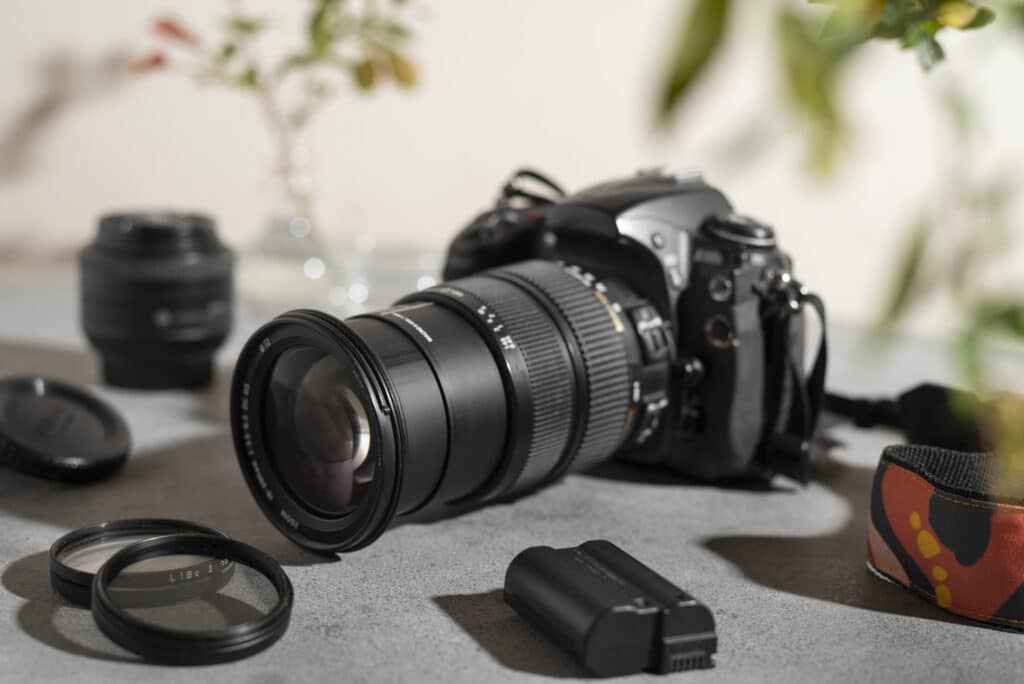
In a world brimming with breathtaking landscapes and vibrant cityscapes, panoramic photography offers a unique way to capture the vastness and beauty that surrounds us. This art form allows photographers to create stunning images that envelop the viewer in expansive scenes, evoking feelings of wonder and adventure. Whether you’re standing atop a mountain, gazing out over a sprawling city skyline, or wandering through a lush forest, panoramic photography allows you to tell a story that is as wide as your vision. If you’re a beginner eager to explore this captivating genre, this guide will equip you with essential techniques, tips, and creative ideas to help you master the art of panoramic photography. Join us as we delve into the world of wide-angle perspectives, sharing insights on equipment, composition, and post-processing that will elevate your photography and inspire you to capture the world in all its glory.
Introduction to Panoramic Photography
Panoramic photography presents an extraordinary way to capture the world’s vastness, allowing you to showcase expansive landscapes, bustling urban scenes, and intricate details that traditional photographs might overlook. Unlike conventional photography, which is confined to a single frame, panoramic photography broadens the scope of visual storytelling, inviting viewers to immerse themselves in the scene. Picture standing on a mountaintop, surveying a sprawling valley, or taking in a city skyline at dusk; panoramic photography lets you convey that breathtaking experience through one sweeping image.
At its core, panoramic photography captures a wider field of view than the human eye can perceive, often achieved by stitching multiple images into a continuous shot. This technique enhances the visual impact and creates depth and context. Whether using a specialized panoramic camera, a smartphone, or a DSLR, the possibilities are nearly endless.
This guide will cover the essential principles of panoramic photography, including necessary equipment and techniques for creating stunning images. We’ll explore tips for composition, lighting, and post-processing to equip you for your journey into this captivating photography style. Grab your camera and get ready to discover the world through a wider lens!
Understanding the Basics of Panoramic Shots
To embark on your journey into panoramic photography, it’s essential to understand the foundational concepts that differentiate these expansive images. At its core, a panoramic shot captures a wider field of view than a standard photograph, allowing you to showcase sweeping landscapes, bustling cityscapes, or intimate gatherings in a single frame. This technique enhances the visual appeal of your photos while immersing viewers in the scene, providing context and depth that traditional images may lack.
Understanding the mechanics of panoramic photography begins with composition. Unlike conventional photos, where you focus on a single subject, a panoramic shot requires consideration of the entire scene. Think of it as storytelling through a wider lens—every element within the frame contributes to the narrative. Identify key focal points that guide the viewer’s eye across the image, and pay attention to the horizon line, as it plays a significant role in maintaining balance and perspective.
Next, familiarize yourself with various methods for capturing panoramic images. The simplest approach is to use a smartphone’s built-in panorama mode, which allows you to sweep the camera across the landscape while it stitches images automatically. For more control and higher quality, consider using a DSLR or mirrorless camera on a tripod, ensuring a consistent horizon and sharpness across the frame. By taking multiple overlapping shots and stitching them together in post-processing software, you can create stunning, high-resolution panoramas showcasing intricate details and vibrant colors.
Mastering exposure and lighting is also crucial in panoramic photography. Since you’ll capture a broader scene, variations in light can lead to uneven exposure. A good practice is to use manual settings to lock your exposure and maintain consistency throughout the series of shots. This meticulous attention to detail will yield a final image that feels cohesive and professionally polished.
By understanding these fundamental principles of panoramic photography, you’ll be well-equipped to capture breathtaking images that transport your audience into the heart of the scene, inviting them to explore every corner of your wide-angle world.
Choosing the Right Equipment for Panoramic Photography
Selecting the right equipment for panoramic photography is essential for capturing stunning landscapes that immerse viewers in the scene. While you don’t need top-of-the-line gear to begin, understanding the basics will significantly enhance your ability to create impressive panoramas.
Start with your camera choice. DSLRs and mirrorless systems are great for their versatility and image quality, but many smartphones now feature impressive panoramic modes that can produce excellent results. If you’re using a DSLR or mirrorless camera, a wide-angle lens between 14mm and 24mm is ideal, as it captures more of the scene. A lens with minimal distortion will help maintain the landscape’s integrity.
A sturdy tripod is also crucial for stabilizing your camera, ensuring sharp images and consistent alignment across shots. Look for one with a panning head for smooth horizontal rotations. Additionally, remote shutter releases or self-timers help minimize camera shake during long exposures. By carefully selecting your equipment, you’ll master panoramic photography and create scenes that draw viewers in. Happy shooting!
Camera Settings for Stunning Panoramas
Capturing breathtaking panoramic images requires precise camera settings to fully convey expansive landscapes and sweeping vistas. Here’s a breakdown of essential adjustments to help you create stunning panoramas that will captivate viewers.
Aperture: Set your aperture to a mid-range value, typically between f/8 and f/11, to achieve greater depth of field. This setting ensures more of the scene remains in sharp focus. While a wider aperture (like f/2.8) may create a lovely blurred background, you’ll want maximum detail across your entire panorama.
Shutter Speed: Use a fast shutter speed to minimize motion blur, particularly during sweeping movements across landscapes. A speed of 1/250th of a second or faster is a good starting point, but adjust based on available light and the speed of any moving subjects.
ISO: Keep your ISO as low as possible, ideally at 100 or 200, to minimize noise. Increasing the ISO can lead to graininess, detracting from the clarity and detail you desire.
White Balance: Set your white balance manually to maintain a consistent color cast across all images, avoiding the fluctuations of auto settings.
Manual Focus: Autofocus may struggle with vast scenes, so switch to manual focus to select your point precisely. Focus about one-third into the scene for optimal sharpness.
Shooting Mode: If your camera features a panoramic shooting mode, use it to guide your framing and maintain consistent exposure. If not, ensure that each image overlaps by about 30% as you sweep the camera, which is crucial for effective post-processing stitching.
By mastering these camera settings, you’ll be equipped to capture stunning panoramic photographs. With practice and attention to detail, your images will reflect the vastness and beauty of the world, inviting viewers to immerse themselves in the landscapes you skillfully frame.
Tips for Shooting Panoramic Images
Shooting panoramic images can be a rewarding yet challenging task, especially for beginners eager to capture sweeping landscapes or vibrant cityscapes. Here are essential tips to improve your panoramic photography skills and ensure your images are stunning and cohesive.
1. Choose the Right Location: A captivating location is the foundation of a great panoramic shot. Look for wide-open spaces like mountain vistas, expansive beaches, or bustling urban skylines. Early mornings or late afternoons provide the best light, enhancing colors and minimizing harsh shadows.
2. Use a Tripod: Stability is crucial, as even slight movement can misalign your final image. A sturdy tripod helps maintain a consistent height and angle throughout your series of shots. If you don’t have one, find a stable surface to rest your camera.
3. Set Your Camera Settings: Switch to manual mode to ensure consistent exposure across all images. Set your aperture, ISO, and shutter speed to remain the same throughout the sequence to avoid discrepancies in lighting.
4. Overlap Your Shots: Aim for a 30% overlap between each frame when capturing images. This overlap is essential for effective stitching, allowing software to recognize common points.
5. Use a Wide-Angle Lens: A wide-angle lens helps capture a broader field of view, reducing the number of images needed for a complete panorama. However, be cautious of edge distortion that can complicate stitching.
6. Keep the Horizon Level: A tilted horizon can ruin a panoramic image. Use a bubble level or the grid feature on your camera to ensure straight shots.
7. Stitch Carefully: After capturing your shots, use photo editing software like Adobe Lightroom or specialized panorama stitching software to combine them. Pay attention to alignment and make necessary adjustments for smooth transitions.
By following these tips, you’ll be on your way to capturing breathtaking panoramic images that transport viewers to the stunning locations you’ve explored. Remember, practice makes perfect, so get out there and start shooting!
Stitching Techniques: How to Combine Your Shots
Stitching techniques are the linchpin of panoramic photography, enabling you to seamlessly blend multiple images into breathtaking wide-angle compositions. For beginners, mastering these methods can transform simple snapshots into captivating vistas that transport viewers to the heart of the scene.
The first step in the stitching process is capturing your images with intention. Ensure that each frame overlaps with adjacent shots by at least 30%. This overlap is crucial, providing stitching software with reference points to create a cohesive image. Using a tripod enhances consistency between shots, minimizing perspective shifts that could complicate the stitching process.
After capturing your images, it’s time to bring them together. Numerous software options are available for stitching, from user-friendly applications like Adobe Lightroom and Photoshop to specialized programs like Hugin and PTGui. Each has unique features, but the basic principles remain consistent: import your images, select stitching options, and let the software work its magic.
During the process, pay close attention to the alignment of horizons and straight lines, as these can be particularly challenging to merge. Most software will detect overlapping areas and align them, but some manual adjustments may be necessary. Once stitched, fine-tune the final product by adjusting colors, correcting distortions, and cropping out unwanted edges for a polished masterpiece.
Finally, save your work in a high-resolution format to preserve every detail of your panoramic capture. With practice and patience, you’ll develop a keen eye for stitching, transforming your panoramic photography into a stunning showcase of the world around you. Embrace the journey, experiment with techniques, and watch your skills evolve into a sweeping cinematic experience.
Software Options for Panoramic Stitching
Creating breathtaking panoramic images relies not only on capturing the perfect shot but also on selecting the right software for stitching your photos together. Fortunately, there are various software options available, catering to different skill levels and preferences.
For beginners, Hugin is an excellent starting point. This open-source software is user-friendly and offers powerful features that enable you to align, blend, and stitch your images seamlessly. Hugin has an intuitive interface that guides you through the panorama creation process, complete with helpful wizards that simplify the stitching setup. Plus, it’s free, making it an accessible choice for budding photographers.
If you’re seeking something more advanced, Adobe Photoshop is a fantastic option. While it has a steeper learning curve, its robust capabilities allow for intricate adjustments and high-quality results. The Photomerge feature automatically aligns and blends your images, making it a favorite among professionals.
Another popular choice is PTGui, specialized software designed specifically for panoramic photography. It offers advanced features, including batch stitching and HDR image support, excelling in handling large image files and complex scenarios.
For a more streamlined approach, Microsoft Image Composite Editor (ICE) is an easy-to-use tool that allows for quick stitching. Its straightforward interface enables users to drag and drop images, creating stunning panoramas with just a few clicks.
Whichever software you choose, take time to familiarize yourself with its features. Experimenting with different options will enhance your stitching skills and help you discover the best tool for your creative vision. Remember, the right software can elevate your panoramic photography, transforming a series of images into a cohesive landscape that captures the beauty of your surroundings.
Capture stunning panoramic shots with our beginner’s guide to panoramic photography! Learn essential techniques for seamless, high-quality images. Whether for landscapes, virtual tours, or creative projects, panoramic photography unlocks new perspectives. Contact us today to discover how you can master this art and enhance your photography skills!




